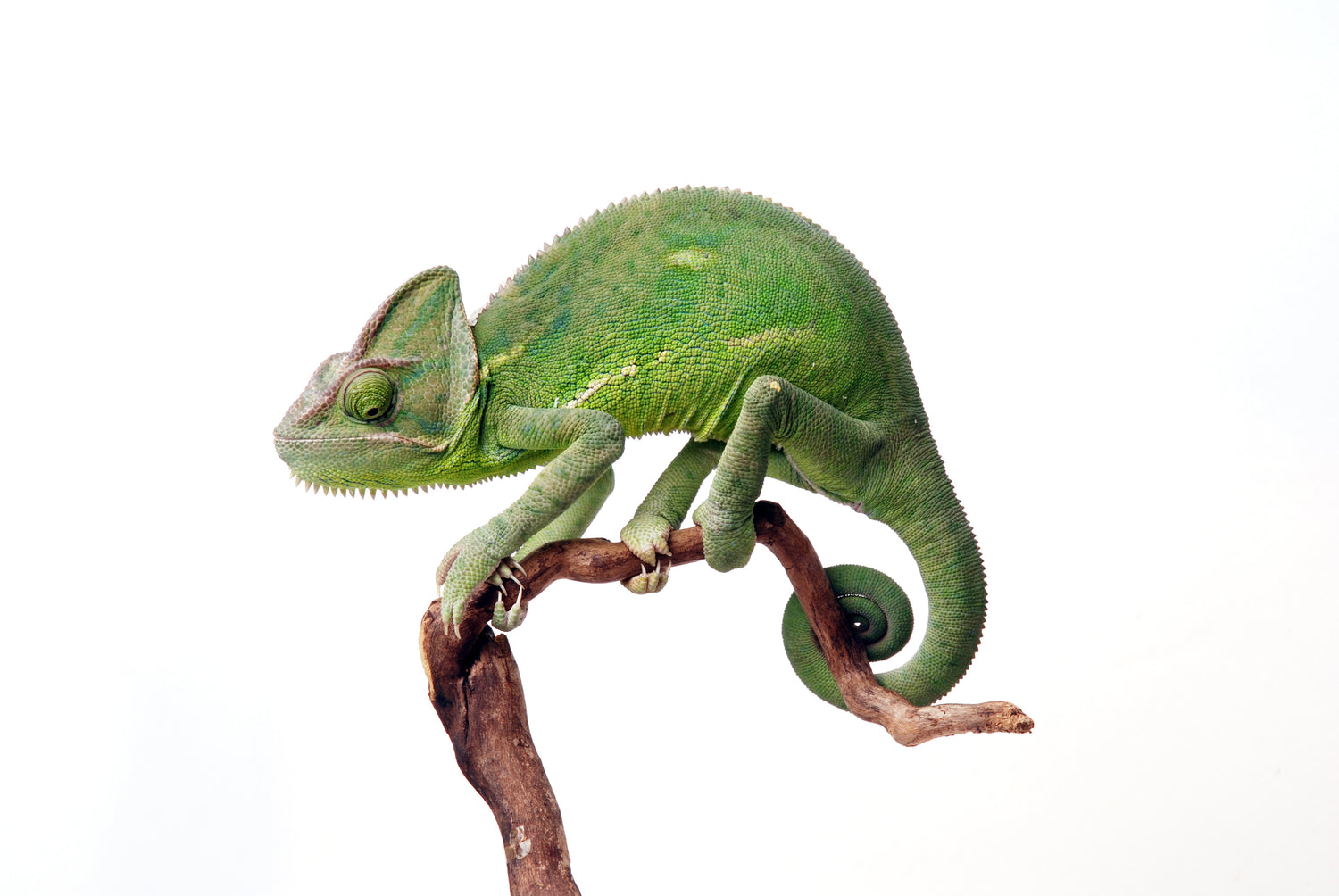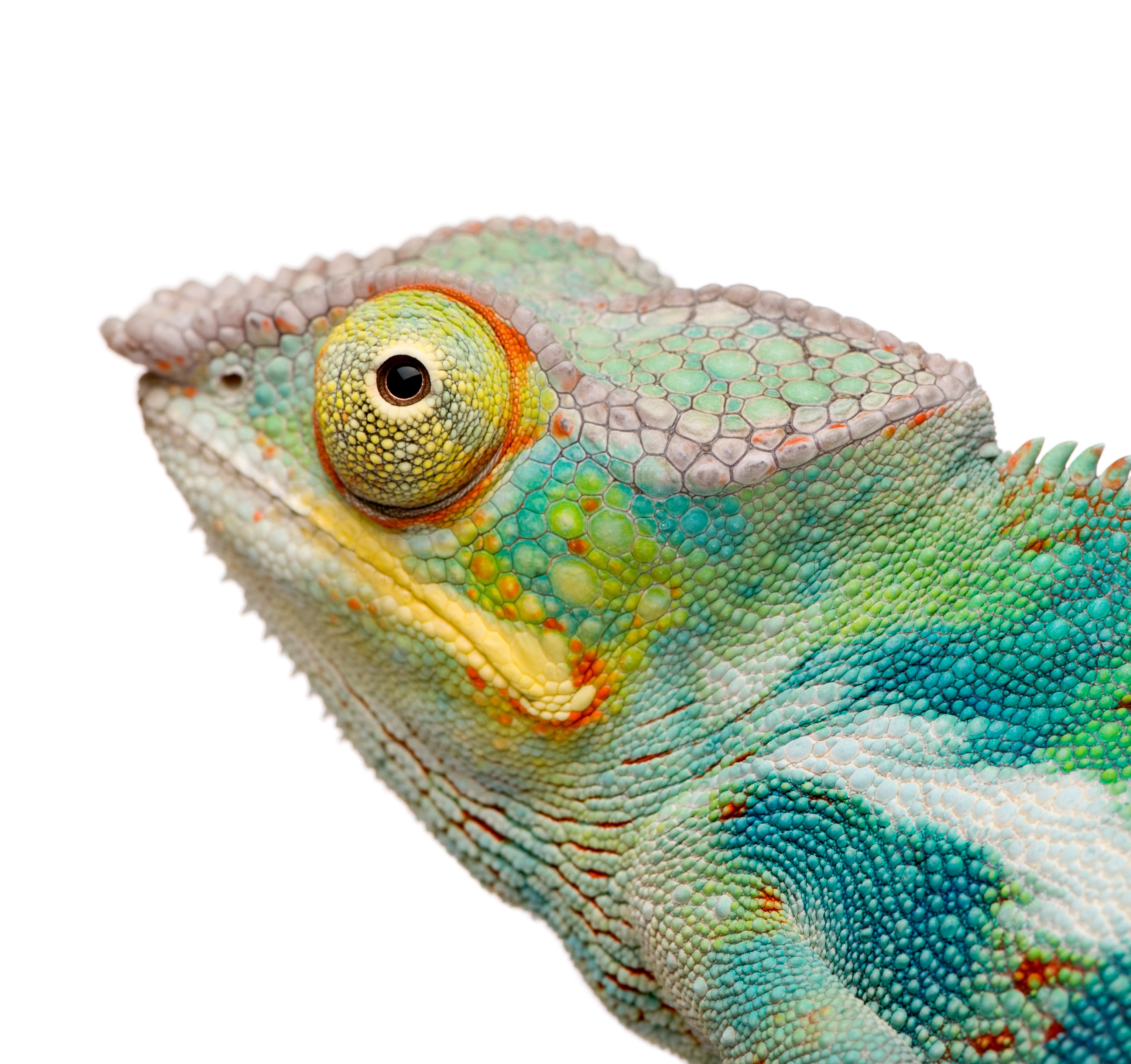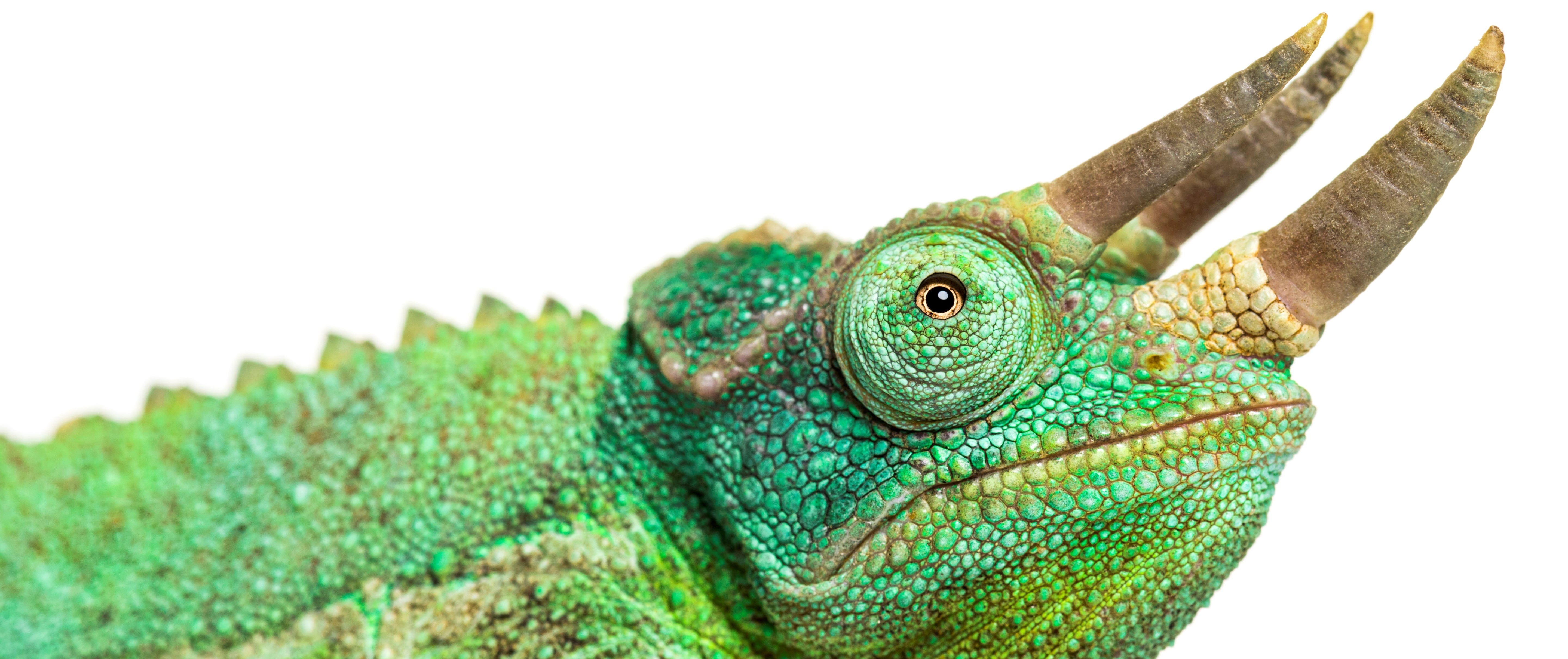Veiled chameleons are a favorite amongst reptile lovers; they have a particularly interesting character and unusual appearance; however, they can be difficult for beginners because of their advanced care level. Usually, when one thinks of a classic chameleon, the veiled cham is the kind that springs to mind.
Veiled chameleons are insectivores in the wild, so they need a diverse range of bugs in their diet; it is essential to select the right insects that will provide the correct nutrients which are necessary to your chameleon's well-being. When choosing the feeders, you wish to give your cham, and you need to consider the protein and calcium as well as other nutrients and vitamins that go to make up each insect.
How Often Should Veiled Chameleons Be Fed?
Young, growing veiled chameleons should be fed every day, as much as they will eat.
Fully-grown, adult veiled chameleons should be fed only 2-3 bugs every other day.
What Insects Can Veiled Chameleons Eat?
The majority of your veiled chameleons diet will always be live feeders. The movements of live bugs piques the interest of your chameleon and causes them to want to hunt. Being opportunistic hunters, they will pretty much eat anything that comes along, so it is essential for you only to offer them insects that will be safe for them to eat and will maintain their health. Here are some of the insects that will make up your chameleon's everyday and occasional diet.
Staple insects:
Dubia Roaches are the best staple feeder for a lot of reptiles, well-balanced in nutrients, protein, calcium, and vitamins and come in all sizes. Easy to digest and next to no chance of parasite infection when purchased from a reputable supplier.
(Moisture 71.5%, Protein 21.4%, Fat 3.1%, Ash 1.3%, Fiber 2.6%, Calcium 700mg/kg)
Black Soldier Fly Larvae (Nutrigrubs)
Black soldier fly larvae, aka Nutrigrubs, are a great staple, know n to be very high in calcium, they can even take the place of a calcium supplement that does not contain D3. The only real issue stems from the fact that they are tiny, making them difficult to maintain as the main staple for larger reptiles. However, most chameleons love the adult flies!
(Moisture 61.2%, Protein 17.5%, Fat 14%, Ash 3.5%, Fiber 3%, Calcium 9340 mg/kg)
Superworms are similar to mealworms except that they are higher in nutrients and also lower in chitin. Being easier to digest and better for your reptile makes them a staple rather than an occasional feeder like mealworms.
(Moisture 57.9%, Protein 19.7%, Fat 17.7%, Ash 1%, Fiber 2.7%, Calcium 177mg/kg)
Crickets are well-rounded nutrient wise; they are readily available and cheap. However, they are not the easiest bug to keep, having an unpleasant smell and dying easily as well as being loud. They can also carry parasites, so always watch your reptile for signs of parasite infection and get regular a fecal for your pet when feeding them.
(Moisture 77.1%, Protein 15.4%, Fat 3.3%, Ash 1.1%, Fiber 2.2%, Calcium 275mg//kg)
Silkworms are high in calcium, protein, and minerals and also low in fat. They also contain a mild analgesic making them great for sick reptiles. They can be challenging to find regularly and too expensive, which makes them difficult to maintain as a regular staple.
(Moisture 82.7%, Protein 9.3%, Fat 1.1%, Fiber 1.1%, Calcium 177mg/kg)
Hornworms are one of the most efficient insects in delivering nutrients to your reptile; with no chitin, they are easy to digest; they are low in fat and high in vitamins, protein, and calcium. Just be aware they are high in water content, so they are best fed when small and alongside a staple bug that contains less water.
(Moisture 85%, Protein 9%, Fat 3.07%, Ash n/a, Fiber n/a, 464mg/kg)
Treat/occasional insects:
Butterworms are easy to digest and contain a decent amount of nutrients; however, like waxworms, they are high in fat. They don't contain as much as waxworms, but you still have to be careful when feeding them not to feed too many.
(Moisture 60.2%, Protein 15.5%, Fat 29.4%, Ash 0.8%, Fiber 1.4%, Calcium 125mg/kg)
Waxworms are soft insects that are easy to digest and well-balanced nutrient wise; the only issue with them is that they are very high in fat, which makes them more of a treat.
(Moisture 58.5%, Protein 14.1%, Fat 24.9%, Ash 0.6%, Fiber 3.4%, Calcium 243mg/kg)
Mealworms contain an okay amount of nutrients but not as much as supers. They are high in chitin, which can make them difficult to digest, so you have to be careful when feeding them to avoid impaction in your Chameleon.
(Moisture 61.9%, Protein 18.7%, Fat 13.4%, Ash 0.9%, Fiber 2.5%, Caclium 169 mg/kg, Calcium 2950 mg/kg)
NEVER feed wild-caught insects to your veiled Chameleon, any bugs found outside can be contaminated with pesticides, or carry diseases and parasites that will be harmful to your pet. Always source your feeders from a reputable supplier!
TOXIC BUGS
Here is a list of insects that you should never feed your Chameleon. Accidents do happen, and although the best efforts can be made to prevent your reptile from consuming these bugs, it can happen. If it does, then you must get your Chameleon to a vet as soon as possible, you can use activated charcoal, but this can be hard to administer when it comes to chameleons, so veterinary attention is your best course of action.
- Fireflies (lightning bugs)
- Ladybugs
- Centipede
- Spiders
- Monarch butterflies and caterpillars
- Ants (not all but the bites of some can cause severe allergic reactions)
Gut-Loading
Gut loading is an essential aspect of any insectivorous reptile's diet; it is the process of nourishing your feeder insects with foods that will then pass on the nutrients to your pet. Not doing this is missing a valuable opportunity to supplement your pet's diet. Gut-loading is an essential part of caring for veiled chameleons!
One way to gut-load your feeders is to give them the same vegetables that you would offer to your pet and pass the nutrients from the vegetables in that way. Still, a better approach is to give them a commercial product developed for this purpose as it provides a more balanced range of nutrition.
Supplementing
Supplementing your feeding insects is necessary to maintain your pet's health, you will need to supplement their diet with calcium, calcium plus D3, and multivitamin powder.
If your veiled chameleon is getting enough UVB (see our Veiled Chameleon Care Sheet for requirements), then a calcium supplement without vitamin D3 should be provided at every feeding. A multivitamin with up to 20,000 IU of vitamin D3 and up to 200,000 IU of vitamin A should be provided 2x/month.
See below for high-quality products you can use for supplementing your veiled chameleon.
- Repti-Calcium without vitamin D3
- Rep-Cal Calcium without vitamin D3
- Repashy Calcium Plus
- Zoo Med Reptivite
It's best practice to add a small amount of bee pollen powder to your chameleon's calcium, as pollen is a regular part of their natural diet and contains essential nutrients.
Water
It is essential for you always to have a source of water available for your veiled chameleon. They can go for a little while without water, but since this would be hard for you to gauge, ensuring there is always water on offer to your pet is your best bet. Chameleons like to hydrate by licking the water droplets from the leaves of plants inside their enclosure. So misting their enclosure a couple of times per day will help to keep a source of water available for them. If misting by hand proves to be too much of an inconvenience, you can purchase a mister for them to do this automatically.
Most tap water is safe for them. However, certain areas have better water than others, and it is perfectly safe for you to treat the water before letting your chameleon drink it.




2 comments
Reptile Supply
Hi Christina, thanks for bringing this contradiction to our attention. Upon re-evaluating the advice given in this article, we found some mistakes from our previous content writer. Those mistakes have since been corrected. To clarify your confusion, veiled chameleons are not omnivorous, and fruit/vegetables should not be offered as a regular part of their diet.
Christina M Alquinta
Son is new Veiled chameleon owner. I see on the list staple fruits-grapes and then Fruits to avoid-Green or purple grapes, raisins – Liver and kidney issues.
This is very confusing! Are they toxic or a staple?
Leave a comment
All comments are moderated before being published.
This site is protected by hCaptcha and the hCaptcha Privacy Policy and Terms of Service apply.